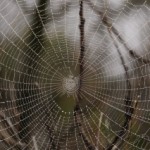Are You Creating Nutrient-Dense Spider Food for Your Website?
Are you feeding the Google SEO spiders? Web spiders are little programs sent out by search engines that go off and look for new web pages to crawl. Having your site crawled on a regular basis could lead to a steady flow of targeted organic traffic arriving on your site due to ranking as highly relevant for the right words and phrases. Once people arrive on your site, you’ll have an opportunity to convince them that they’ve come to the right place. Just like organic food is best, so is organic traffic! It’s free and organically driven visitors have a higher conversion rate than paid traffic.
So, how do you feed the spiders so they’ll rank you well and want to send traffic your way? Web Content.
Web Content – The Food for Search Engine Spiders
Content is spider food and web content feeds the spiders via multiple methods. Strategic new content, on a regular basis, will attract spiders. And what they find on the site upon arrival will help determine what sort of traffic they send your way. If you don’t optimize your site well enough and don’t update it often enough, the results won’t be earth-shattering. If you don’t create content regularly, you’ll also lose rankings you’ve gained (not to mention interest from subscribers). Try to feed the spiders but here’s the thing…feed them something delicious and nutritious, otherwise it might not do your site justice.
Does Your Site Whet the Spiders’ Appetite?
Search engine spiders look at many elements on your website so on-page optimization is vital in getting initial attention. Integrate a solid keyword strategy into a good navigational design. Leverage meta tags, image tags, and other tag and category fields. You can think of on-page SEO as a bit of an appetizer.
The Main Course
Dish up something great for the spiders and the traffic that arrives. Here’s where the nutrients come in! Write search engine optimised content with a solid keyword strategy that writes for 8-legged visitors and 2-legged ones, too. Make sure that it’s useful and interesting (nutritious and delicious!).
Feed Your Audience!
Keyword stuffing isn’t enough. Make sure your content provides value to the reader. Spider food that’s nutrient dense because it feeds every level of curiosity for spiders and for 2-legged visitors can result in your site making the impact you want. You want the right traffic to arrive and to convert from a visitor into a customer. Make each page of your site interesting and useful enough that you satisfy cravings but leave them wanting seconds (resulting in a deeper click and / or your call to action being followed). It’s not always easy to strike the right balance between satiating the 8-legged visitors and the 2-legged ones, too. If needed, get help with your web content.
Get Repeat Diners (& Don’t Forget Dessert!)
Want spiders and people to visit often? Then you’ll need to generate interest via your web content. Learn how to integrate social media elements so that you boost your chances of being found and building relationships. It’s also smart to provide some sort of “dessert” element that doesn’t just get them to your site but that gets them wanting MORE.
Generate Buzz with Off-Page Optimization
Yes, search engine spiders can bring your site traffic via the ranking process. But, don’t rely on spiders alone. Don’t neglect to generate some buzz on your own, too. Off-page SEO tactics will drive visitors and search engine spiders to your site. An integrated SEO writing, article marketing, social media optimization, and a solid web content creation strategy can act like puzzle pieces that fit together to create a big picture and make a dramatic impact to how many visitors you get, how much you’ll have to spend on marketing, and…how much of a return you get on your time and financial investments.
Need help with web content? Contact Dana
photo: ivanmarn
2 Comments to “Are You Creating Nutrient-Dense Spider Food for Your Website?”
-
Get the Kind of Web Content You Want — Monday @ 7:29 am
-
MarleyMauve's Corner — Monday @ 1:24 pm
RSS feed for comments on this post. TrackBack URI

